2018 has been a banner year for scientific discovery in the research laboratory. We’d like to honor some of the accomplishments of research scientists who have the power to change the world, one discovery at a time.

The pace of scientific discovery keeps increasing, and 2018 was no exception. We saw the Nobel Prize committee honor two clinical medicine researchers who created the foundation for today’s immunotherapy-based cancer treatments.
Building upon these discoveries, today’s lab technicians and scientists have announced major clinical medicine discoveries using big data, machine learning, and artificial intelligence (AI) techniques. We’ve also seen exciting new developments in biologically-based energy production and a novel new material science discovery that could revolutionize knee surgery as well as help robots acquire humanlike soft touch capabilities.
And the Nobel Prize in Medicine Goes to Allison and Honjo for “Immune Checkpoint Therapy” Used in Advanced Cancer Treatment

This year’s Nobel Prize in Medicine was jointly awarded to two researchers, James P. Allison of MD Anderson Cancer Center in Houston, and Tasuku Honjo of Kyoto University, Japan, who worked independently to create a new class of cancer drugs that stimulate the immune system. Together, their research has fundamentally changed our assumptions about how to treat cancer, particularly for those advanced cases for which there was once little hope of recovery.

Unlike traditional clinical therapies used in oncology, such as chemotherapy or radiation, Allison and Honjo believed it might be possible to stimulate the body’s own immune system to attack cancer cells directly. This breakthrough approach, now known as “immune checkpoint therapy,” has proved very successful, particularly in the treatment of late-stage melanoma and other advanced stage cancers.
(Too complicated? For a layman’s introduction to the immune system, we recommend the new book The Beautiful Cure by immunologist Daniel M Davis. Listen to an interview with Davis here.)
In a World of Escalating Cancer Treatment Costs, Dutch Research Laboratory Discovers Simple Method to Synthesize Drug Using Ordinary Coffee Filters

As researchers and pharmaceutical companies develop new clinical therapies for cancer treatment, increasing drug costs are creating new concerns for patients. After all, the best therapies in the world are of no use if they are beyond the means of the patient’s ability to pay for them. So we applaud the research taking place at the Technical University Eindhoven in the Netherlands, where researcher Lech-Gustav Milroy has discovered that ordinary coffee filters can be used to synthesize the cancer drug Z-endoxifen (the active ingredient in the well-known drug Tamoxifen). It’s estimated that using coffee filters to extract the Z-endoxifen compound is about 1,000 times cheaper than using an HPLC (high-pressure liquid chromatography) machine, making this a prime example of saving the world –one science discovery at a time.
Chan Zuckerberg Biohub Creates Real-time Global Disease Tracking Platform
2018 also saw some of the first tangible results from laboratory research conducted at the Chan Zuckerberg Biohub in the San Francisco Bay Area, which was funded by Facebook-founder Mark Zuckerberg and his wife Priscilla Chan as part of their philanthropic Chan Zuckerberg Initiative (CZI).
Priscilla Chan speaks at Disrupt SF 2118 about how the Chan ZuckerBerg initiative is funding startups that create a positive, sustainable impact on the planet. (Formaspace is proud to have a part in this story: we build the heavy-duty lab benches used in the new Chan Zuckerberg Biohub laboratory facility.)
One of the new projects announced in 2018 by the Chan Zuckerberg Initiative (CZI) is the launch of an open-source, cloud-based tool called IDSseq. This software platform has the capability to rapidly interpret terabytes of data to detect disease-causing pathogens. The work originated as a research project in the lab of Dr. Joseph DeRisi, co-president of the Biohub and professor of biochemistry and biophysics at UC San Francisco.
Watch Joseph DeRisi (UCSF, HHMI) discuss genome sequencing for pathogen discovery. DeRisi’s work is the basis for IDseq, a new open source cloud-based analysis platform that can detect and respond to infectious disease outbreaks around the world.
DeRisi explains: “Pathogens don’t respect geographic borders. An emerging infectious disease in one community can affect surrounding areas and countries. The global health community needs the ability to share data quickly to track outbreaks or emerging diseases. With IDseq, we hope to empower data-driven decisions about how to better manage antibiotics, where to prioritize immunization campaigns, how to shape vector control and surveillance efforts.”

The IDseq system is already hard at work, helping to identify mystery infections at a hospital in Dhaka, Bangladesh, in an ongoing pilot project in partnership with the Bill & Melinda Gates Foundation. “IDseq is a powerful weapon to advance global health,” said Dr. Cori Bargmann, head of science for CZI. “By revealing trends in global pathogen distribution, we can help inform disease management and policy decisions that can ultimately save thousands of lives.”
2018 Has Been a Big Year for Major Advances in Clinical Medical Research Using Big Data, Machine Learning, and AI
IDseq was not the only breakthrough in disease detection this year. We saw many other innovative, clinical medical solutions that are building on the rapidly advancing world of big data analysis, machine learning, and artificial intelligence (AI).
For example, at Stanford University, researchers at the Center for Artificial Intelligence in Medicine and Imaging have developed a new artificial intelligence algorithm, called CheXNeXt that can reliably read and interpret chest x-rays to identify signs of disease.

(Disclaimer: Stanford University Hospital is a Formaspace client.)

Similar research is also taking place in Berlin at the AI incubator Merantix, which is partnering with radiology offices and hospitals. The initiative, which will be spun off as the startup company Merantix MX Healthcare, has a database of up to 1 million mammograms to feed into its “deep learning” algorithms, according to CEO Jonas Muff.
Meanwhile, laboratory researchers at the University of Washington St. Louis are using MRI imagery to predict which patients will suffer from Alzheimer’s disease. This approach makes use of diffusion tensor imaging (DTI), which can assess the condition of the brain’s white matter.
The study’s lead author, Cyrus A. Raji, M.D., Ph.D., Assistant Professor of Radiology at the Mallinckrodt Institute of Radiology at Washington University School of Medicine in St. Louis, explained that “with DTI, you look at the movement of water molecules along white matter tracts, the telephone cables of the brain. When these tracts are not well connected, cognitive problems can result.”
While some would consider an early Alzheimer’s diagnosis to be a ‘death sentence,’ Dr. Raji disagrees. “Research shows that Alzheimer’s disease risk can be reduced by addressing modifiable risk factors like obesity and diabetes. With early detection, we can enact lifestyle interventions and enlist volunteers into drug trials earlier.”
New Laboratory Discoveries in Biological Energy Production and Sustainability
If you’ve read our report on What Manufacturers Can Do to Help Solve the Energy Crisis, you know the Formaspace is very concerned about pursuing sustainable business practices.
So we were very intrigued by a new process being developed at the King Juan Carlos University in Spain that uses purple phototrophic bacteria (which can store energy from light) to extract energy from organic compounds found in industrial wastewater and household sewage.
In an interview, the paper’s co-author Dr. Daniel Puyol explains that “one of the most important problems of current wastewater treatment plants is high carbon emissions. Our light-based biorefinery process could provide a means to harvest green energy from wastewater, with zero carbon footprint.”
Novel Gel Material Science Research Could Revolutionize Knee Surgery and Create Soft Touch Robot ‘Hands’
Finally, we don’t want to leave out a couple of fascinating developments in material science research, 2018 may prove to be the year of the soft ‘hydrogel.’
Researchers at the École Polytechnique Fédérale de Lausanne (EPFL) in Switzerland are investigating ways to use hydrogels to replace the cartilage and meniscus materials in our knees that can cause us tremendous pain when our knees become damaged. Hydrogels naturally adhere to these soft tissues, which makes them an ideal candidate for introducing repair cells to the localized areas.
Soft hydrogels are also being investigated for the use in artificial joints as well, except in this case, we are talking about robot joints, not human ones. In a paper published in Nature Materials, French researchers at the ESPCI in Paris have devised a soft hydrogel material that configures itself into a pre-determined shape when inflated. This would allow soft touch robotic “fingers” to safely touch and handle sensitive objects and materials without damaging them.
Closer to home, researchers at the University of Arlington’s Materials Science and Engineering Department are using two-dimensional soft hydrogels that can be commanded to change shape at a specific rate and in a specific direction. UTA’s Assistant Professor Kyungsuk Yum has documented the lab’s work in a paper titled “Bioinspired 3D structures with programmable morphologies and motions” published in Nature Communications.
Make Your Own Scientific Discoveries in a Customized Formaspace Laboratory
A modern, well-designed laboratory can make all the difference.
Here at Formaspace, we can help you design a new laboratory or renovation project, then manufacture the custom lab furniture for your wet lab, dry/tech lab, or cleanroom here at our Austin, Texas factory headquarters.
Want to learn more? Contact your Formaspace Design Consultant today.
Find out why major laboratories around the world, such as the Chan Zuckerberg Biohub, turn to Formaspace for their laboratory solutions.
Make the connection today. You’ll be glad you did.
















